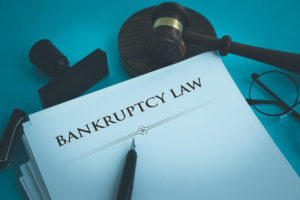A Survey of the Local Form chapter 13 plans

The Final Report of the American Bankruptcy Institute Commission on Consumer Bankruptcy §4.02 addresses Nonuniform Court Practices. The background to the provision notes that “Local practices can deviate from the Bankruptcy Code or the Federal Rules of Bankruptcy Procedure.
Perhaps most troublingly, these practices can override choices that the statute or national court rules leave to the debtor. Such practices can lead to unequal results for debtors based on where they live and interfere with the ability of debtors to obtain a fresh start.”
In Chapter 13 cases some courts utilize local rules, local forms, local standing orders, local form plans and local confirmation orders in ways that are inappropriate. These variations do not simply represent courts’ regional quirks, charming traditions, state specific exemptions or Circuit level case law, but rather substantive lawmaking. For this reason, it would be appropriate to mandate the use of uniform national forms and prohibit the utilization of local forms in chapter 13. This column focuses primarily on Local Form plans.
Until December 1, 2017, there was no national chapter 13 plan form. Some districts had a required local form plan. Other districts had an optional local form plan. The Bankruptcy Rules Committee had originally planned to have a uniform national plan form but in 2014, a vocal minority[1] of judges named the Committee of Concerned Bankruptcy Judges opposed a mandatory uniform national plan.
The primary reason cited was that the uniform national plan would impact “conduit plan jurisdictions”. A “conduit plan” is where post-petition mortgage payments are disbursed by the trustee instead of directly by the debtor. A “conduit plan jurisdiction” is one where judges mandate that plans provide for post-petition mortgage payments to be disbursed through the trustee.
The impact of a uniform national plan would presumably be that debtors in these “conduit plan jurisdictions” would realize that they were permitted to pay post-petition mortgage payments directly and not through trustee disbursements and would choose to do so.
The Committee of Concerned Bankruptcy Judges contended that at least some of their jurisdictions were “bound by case law” to require “conduit plans”. Why a bankruptcy judge “bound by case law” could not simply deny confirmation of plans not complying with binding case law was not explained. In the end, Bankruptcy Rule 3015.1 did allow judges to issue a Local Form plan for a district instead of using the national plan form and the majority of jurisdictions chose to do so.
The Bankruptcy Rules Committee giving judges the power to control a district wide plan was allowing the tail to wag the dog. Pursuant to 11 U.S.C. §1321, it is the debtor who is permitted to propose a plan. Parties in interest, including trustees, have standing to oppose plan confirmation. The judge’s role is to adjudicate confirmation objections. Drafting, maintaining and/or updating a Local Form plan is a burden.
The Local Form plan subjects a bankruptcy judge to work, being lobbied by stakeholders, intra-district conflict with fellow judges, being subjected to criticism based on the contents of the Local Form plan, and then the awkwardness of having to rule on the validity of a Local Form plan that the judge either drafted or at least approved.
Sadly and accurately, many debtors and their attorneys believe it is futile to contest a provision that is contained in a Local Form plan drafted or approved by the same bankruptcy judge ruling on confirmation.
A common issue addressed in Local Form plans is the timing and implications of vesting. To confirm a plan, a debtor must satisfy the liquidation analysis of 11 U.S.C. §1325(b)(4) requiring that the debtor must pay claims no less than the amount that would have been paid in chapter 7. Confirmation already assumes that causes of actions, tax refunds, inheritances, etc. have been valued as part of the liquidation analysis.
A chapter 13 debtor has exclusive control over estate property. The statutory presumption of 11 U.S.C. §1327(b) is that all property of the debtor vest in the debtor upon confirmation. Despite this presumption, some Local Form plans[2] provide that property vests at discharge instead of at confirmation. Two Local Form plans[3] provide that a claim against a third party does not vest at confirmation.
One Local Form plan[4] provides that although property vests at confirmation, a cause of action that is liquidated post-confirmation is property of the bankruptcy estate and vests in the trustee.
One Local Form plan[5] provides that the trustee will have concurrent standing to bring causes of action owned by the debtor and that all proceeds or damages recovered are to be retained pending an order of the bankruptcy court.
One Local Form plan[6] provides that property vests at confirmation but that a debtor must hold distributions of funds exceeding $2,500 that are not derived from regular monthly income. One Local Form plan[7] provides that property acquired by the debtor post-petition vests in the trustee and becomes property of the estate.
A goal of many Local Form plans is to effectuate future plan modifications without following the Code and Rules. Pursuant to 11 U.S.C. §1329(a), a debtor, trustee or holder of an allowed unsecured claim can seek plan modification. However, many Local Form plans skip the procedure set forth in 11 U.S.C. §1329 and Bankruptcy Rule 3015(g).
Some Local Form plans[8] require that proceeds from causes of action be paid to the trustee. One Local Form plan[9] provides that the nonexempt portion of a lawsuit or claim held by the debtor must be turned over to the trustee for distribution. One Local Form plan[10] allows the court to alter plan payments. Another Local Form plan[11] requires that in the event the debtor’s disposable income or tax refund increases then the debtor(s) shall increase payments to general unsecured creditors.
One Local Form plan[12] provides that “the proceeds of any refinancing or the sale of nonexempt property owned by Debtor or acquired during the term of this Plan must be turned over to the Trustee for administration.
One Local Form plan[13] requires that funds from personal injury, workers compensation, buyout, severance package, lottery winnings, inheritance, or other funds to which the debtor may be entitled to receive should be paid to the trustee for the benefit of creditors. One Local Form plan[14] requires that a debtor must pay the trustee non-exempt proceeds of sale. Some Local Form plans[15] dictate that tax refunds will be paid to the trustee.
On August 26, 2020, the Fifth Circuit Court of Appeals ruled such a provision invalid as violating the Debtor’s substantive rights. Diaz v. Viegelahn, 2020 U.S. App. LEXIS 27316 (5th Cir, 2020). One Local Form plan[16] provides that “Debtor also commits to the plan, any disposable income, as defined by 11 U.S.C. §1325(b)(2), that Debtor receives during the plan term.” One Local Form plan[17] assumes that certain types of property during the case will be turned over to the trustee and added to the plan payout without the requirement of a plan modification.
One Local Form plan[18] provides that the nonexempt proceeds of any lawsuit or unliquidated claim held by the Debtor as of the filing date or accruing during the term of the plan must be turned over to the Trustee and constitutes an additional distribution. These provisions reflect a disregard for the requirements for confirmation, the effect of confirmation and/or the procedural and substantive requirements for a post-confirmation modification.
Some Local Form plans[19] impermissibly require a fixed minimum plan term. The Ninth Circuit recently held such a minimum plan term in a form plan is prohibited. In re Sisk, 962 F.3d 1133 (9th Cir, 2020). The burden to raise issues relative to 11 U.S.C. 1325(b) is on the trustee or the holder of an unsecured claim. There is no minimum plan duration required in §1322.
One plan[20] requires that payments be received within the applicable commitment period of the plan which would seem to prevent a below-median income debtor from proposing a plan that exceeds 36 months. Another plan[21] provides that if a debtor’s CMI is above median, then the plan length is 60 months from the date the plan is confirmed (as opposed to filing) although that was deemed inconsistent with the Code by one of the judges in the district. In re Kinne, 2020 Bankr. LEXIS 2401 (Bankr. E.D.Mich, September 11, 2020).
Some Local Form plans[22] reflect a dissatisfaction with the discovery tools and disclosure requirements set forth in the Code (e.g., §521(f) and Rules 1007(h) and 2004) and impose enhanced requirements on debtors providing information to the trustee and/or court.
Finally, there are a variety of ways that Local Form plans abridge rights such as restrictions on a debtor altering paycheck tax withholdings[23], restricting the sale of non-estate property owned by the debtor[24], restricting any sales of assets without reference to 11 U.S.C. §363(b) or Bankruptcy Rule 6004[25], restricting a debtor’s ability to incur debt[26], restricting purchases of property[27], imposing certain interest rate amounts on unsecured claims[28], preventing a debtor from entering a mortgage loan modification without court approval[29], requiring that a distribution to the debtor in an amount of more than $2,500 (other than regular income) be held by the debtor and not used without the trustee’s permission or a court order[30], requiring court approval prior to entering into a settlement agreement [31] and requiring court approval to hire and use professionals to sell property[32].
Whether it is done through a Local Form plan or a standing order or a local rule, a bankruptcy court does not have the authority to abridge a debtor’s substantive rights. To force a debtor to utilize a Local Form plan which includes provisions he or she disagrees with and would never propose voluntarily and is not legally required to propose is egregious. It requires debtors to dig their own graves.
A variation of this is when the order confirming the plan does more than simply confirm the plan but instead contains substantive restrictions. The result is that the court has imposed provisions the debtor never wanted or even had an opportunity to litigate. This should not be permitted. A confirmation order should be as vanilla as the (unfortunately) optional Official Form 315 since it should never do more than confirm the plan.
Furthermore, there is no reason for prohibitions or affirmative requirements contained in the Bankruptcy Code, Bankruptcy Rules, or in binding case law to be restated in a chapter 13 plan. If a restriction or requirement exists in the Bankruptcy Code or in the Bankruptcy Rules then that should be the provision that is relied upon to implement the restriction or requirement. Bankruptcy judges are the gatekeepers on plan confirmation. Bankruptcy judges should not be the gatekeepers on the contents of proposed plans. Bankruptcy judges should not use Local Form plans to effectuate other policy goals.
Here is how the Lundin treatise explains the Local Form plan problem:
“….too many of the local Chapter 13 plan forms are weaponized to repel nonstandard provisions and to require Chapter 13 debtors to include provisions in their plans that debtors and their attorneys don’t want and can’t challenge except to object to confirmation of their own plans. Judges are using the local form for the Chapter 13 plan as a vehicle for making substantive decisions about what is or is not permitted by the Bankruptcy Code with respect to many aspects of Chapter 13 practice. In quick order after the 2017 amendments to Bankruptcy Code Rule 3015(c), reported cases revealed tailored, local plan forms that mandated, without flexibility, specific treatments for tax returns, tax refunds, direct payment of creditors, modified plans after confirmation and post-confirmation property of the estate.
LUNDIN ON CHAPTER 13
The excesses of some Local Form plans, local rules, standing orders, and confirmation orders are primarily the fault of the bankruptcy judges that enact such provisions. However, it is enabled by the Bankruptcy Rules. Allowing bankruptcy judges to control the plan contents instead of merely adjudicating confirmation disputes under the Bankruptcy Code was comparable to allowing the baseball umpire to tell the pitcher when and what types of pitches (i.e. fastball, changeup, curveball, slider, etc.) he is permitted to throw.
As it relates to the Local Plan form problem, the Bankruptcy Rules Committee was made aware of these issues in comments submitted by California bankruptcy attorneys Norma Hammes and Ike Shulman on September 27, 2016. Hammes explained that many local plans inappropriately mandated content and that it was wrong to require debtors to sign a plan that inappropriately abridged his or her own rights.
Shulman also pointed to problems in local plans abridging rights and pointed out the problem of allowing bankruptcy judges complete authority over the plan despite the pro forma “public notice and opportunity for public comment”. The Bankruptcy Rules Committee would have been wise to heed the warnings of Hammes and Shulman.
Bankruptcy courts wield considerable power by overruling or sustaining objections to confirmation under 11 U.S.C. §1325. However, the court should not be permitted to implement its own preferences and policy choices through a local plan. A review of local plans around the country indicates that this is occurring in some districts.
This reveals a misapplication of the reason for a form plan which was to provide a consistent structure for a plan to make it easier to read and process. That some courts would overreach with regard to local plan provisions was predicted and was predictable based on how some courts misuse local rules and forms. The Bankruptcy Rules Committee should eliminate the option for a local plan along with all other local forms.
[1] 144 out of 350. [2] MDAL; SDAL, CDCAL, SDCAL, DDC, MDGA, NDGA,WDLA, DME, DMD, DMASS, NDMISS, SDMISS, DNEB, DNH, MDNC, WDNC, EDNY, NDNY; DNM, EDOKLA, NDOKLA. WDOKLA, WDPA, DRI, EDTENN, EDTEX, NDTEX, SDTEX, NDWVA, SDWVA [3] DGUAM, DHAW [4] SDIL [5] EDMICH, [6] DOR [7] SDIL [8] SDAL, NDFLA, EDTEX [9] EDLA [10] DALASKA [11] SDFLA [12] EDLA [13] SDOHIO [14] SDTEX [15] DGUAM, DHAW, SDIL, EDMICH, WDMICH, EDMO, DMD, NDNY, SDOHIO, EDOKLA, NDOKLA, WDTEX [16] DSD [17] SIL [18] EDLA [19] DALASKA, EDARK, WDARK, SDCAL, SDGA, MDGA, NDGA, DIDAHO, DMASS, EDMICH, WDMICH, DMINN, NDMISS, SDMISS, WDNC, DND, SDOHIO, EDTEX, WDTEX, EDWIS, WDWIS [20] SDIL [21] EDMICH [22] DGUAM, SDIL, WDLA, DMONT, MDNC, WDNC, SDOHIO, DOR, WDPA [23] SDCAL, WDMICH [24] EDCAL, DHAW, EDMICH, DNEV, EDNC, DOR, WDTEX, EDVA, SDWVA, NDWVA [25] WDPA [26] EDCAL, DGUAM, DHAW, DME, EDMICH, WDMICH, EDMO, DNEV, EDNY, DOR, EDOKLA, NDOKLA, WDOKLA, WDPA, WDTEX, EDVA [27] SDCAL, DOR, NDTEX [28] DCONN [29] SDCAL [30] DOR [31] EDMICH, SDOHIO, EDTEX, NDTEX [32] NDWVA, SDWVA














